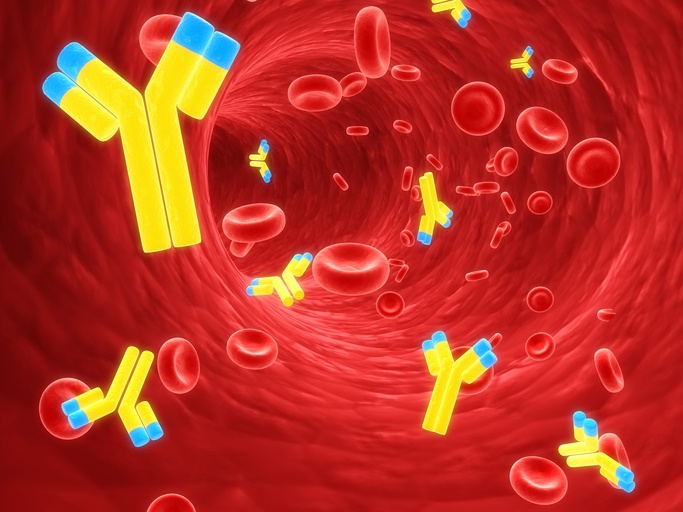Anti human IgG is the most prevalent antibody isotype in human serum. It plays a critical role in the adaptive immune response. When a pathogen invades a human body it is intercepted by a white blood cell called a B-cell. These B-cell lymphocytes have cell surface receptors that bind a wide array of pathogens. Once activated, the B cell divides and produces offspring cells which secrete very specific antibodies capable of identifying that exact invading pathogen. These antibodies recognize a specific antigen binding site.
Antibodies are classified into 5 structurally different forms:
- IgG
- IgM
- IgA
- IgE
- IgD
The human IgG antibody is composed of two heavy chains and two light chains arranged in a ‘Y’ shape. The two top ends of the ‘Y’ are the antigen-binding sites. The adaptive immune response is impressive because of its ability to alter binding sites to create a specific antibody for each invading pathogen. This specificity also makes antibodies a useful tool in biotechnology.
The IgG is a commonly used antibody in biological research. It is a protein composed of amino acids. Each amino acid contains an amine group, a carboxyl group, and a side chain. These amines, carboxyls, and side chains are very useful to researchers who want to use the specificity of antigen-antibody binding. The human IgG antibody is also used to engineer biosensors and immunoassays with high specificity for target molecules.
Commercial antibody production
The widespread use of antibodies in research requires a reliable production method to ensure a steady supply. This is accomplished by a combination of cell culture techniques and animal hosts. Polyclonal antibodies are harvested from the host serum. Monoclonal antibodies are produced in clonal cell lines. These processes are time consuming and require extensive process validation and quality control measures. Therefore, antibodies are an expensive part of research.
Anti Human IgG in immunoassays and biosensors
Anti Human IgG is particularly helpful in the development of biosensors and immunoassays. These diagnostic tools are designed to detect the presence of a pathogen in human serum. A sick patient can potentially be diagnosed with a simple blood draw. The serum portion of the blood is used for an immunoassay. One example is a multiplex ELISA assay in which a 96-well plate is pre-conjugated with antibodies. Each antibody recognizes only one antigen, but the wells of the plate contain different antibodies. The patient’s serum is incubated in the wells of the plate and a particular antigen is detected when it binds to the antigen-recognition-site of the corresponding antibody. If an immunoassay is using a human IgG antibody to test human serum then there is high potential for nonspecific binding. Nonspecific binding is a problem because it increases the chance of reporting false positives and it decreases the sensitivity of the assay. A Human IgG isotype control can help differentiate background signal from antigen-specific signal. The development of more sophisticated biosensors is a rich area of new research and the field is incorporating the principles of integrated photonics to create portable lab-on-a-chip devices.
Related news





